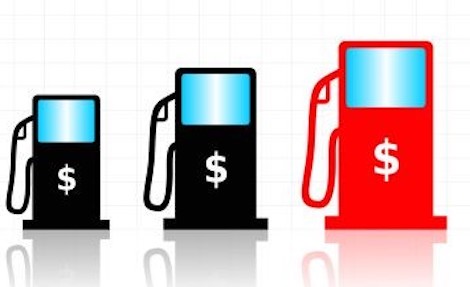There’s not much shippers and carriers can do when decisions or events on the other side of the globe impact the price of fuel. But just because fuel gets more expensive doesn’t mean business stops.
According to the American Trucking Association, trucks moved around 72.5% of freight in the United States by weight in 2020. Since the majority of those trucks run on diesel fuel, seeing a major increase in the price of a gallon of diesel – like the one the U.S. is in the midst of right now – can have an immediate impact on profits.
The average price for a gallon of diesel jumped up to $5.623 on May 9, according to the Department of Energy, marking a 46.3-cent leap over the last two weeks. As recently as Valentine’s Day, diesel was only $4.019 per gallon. A year ago, it was $3.186 – marking a rise of almost $2.50 per gallon over the last 12 months. Trucking companies generally apply a fuel surcharge to cover those inflated fuel prices, but those increases often get passed on to the customer.
It’s hard to predict when the rise will stop – or even slow down – so it’s up to shippers to find other avenues to reduce costs. As diesel prices continue to rise, shippers are faced with the dilemma of charging their customers more or operating at reduced margins – unless they can find other ways to cut costs.
Innovative shippers have embraced AI-driven tools for automation that have helped offset rising fuel costs. By using these tools, it can lower the overall cost of shipments, ensure that goods are delivered on time, and at a fair market cost. Intelligent freight procurement software can help shippers find out-of-network, asset-based carriers. It can uncover qualified carriers that set their own rates, cutting out the price hikes and mystery fees of brokers and other middlemen.
Fuel prices fluctuate all of the time, and basic economics tells us that the price of diesel will come back down in the future. But how soon? And how much will it actually drop? Fuel prices are the unknown in this scenario, but utilizing these AI-driven tools for the other aspects of your freight procurement operations will help mitigate rising costs no matter what the price of a gallon of fuel is. In the event that the cost of diesel drops back down to a reasonable level, the automation tools are still in place, delivering even more savings.
Shippers must get creative when there are cost increases outside of their control. By taking advantage of the right AI software and machine learning, shippers will not only offset some of the costs that go along with high fuel prices, but they will also improve on-time delivery and find more affordable carriers for the long run. That bolsters sustainability and unearths ways to reduce costs – which means the customers feel less of an impact, as well.

